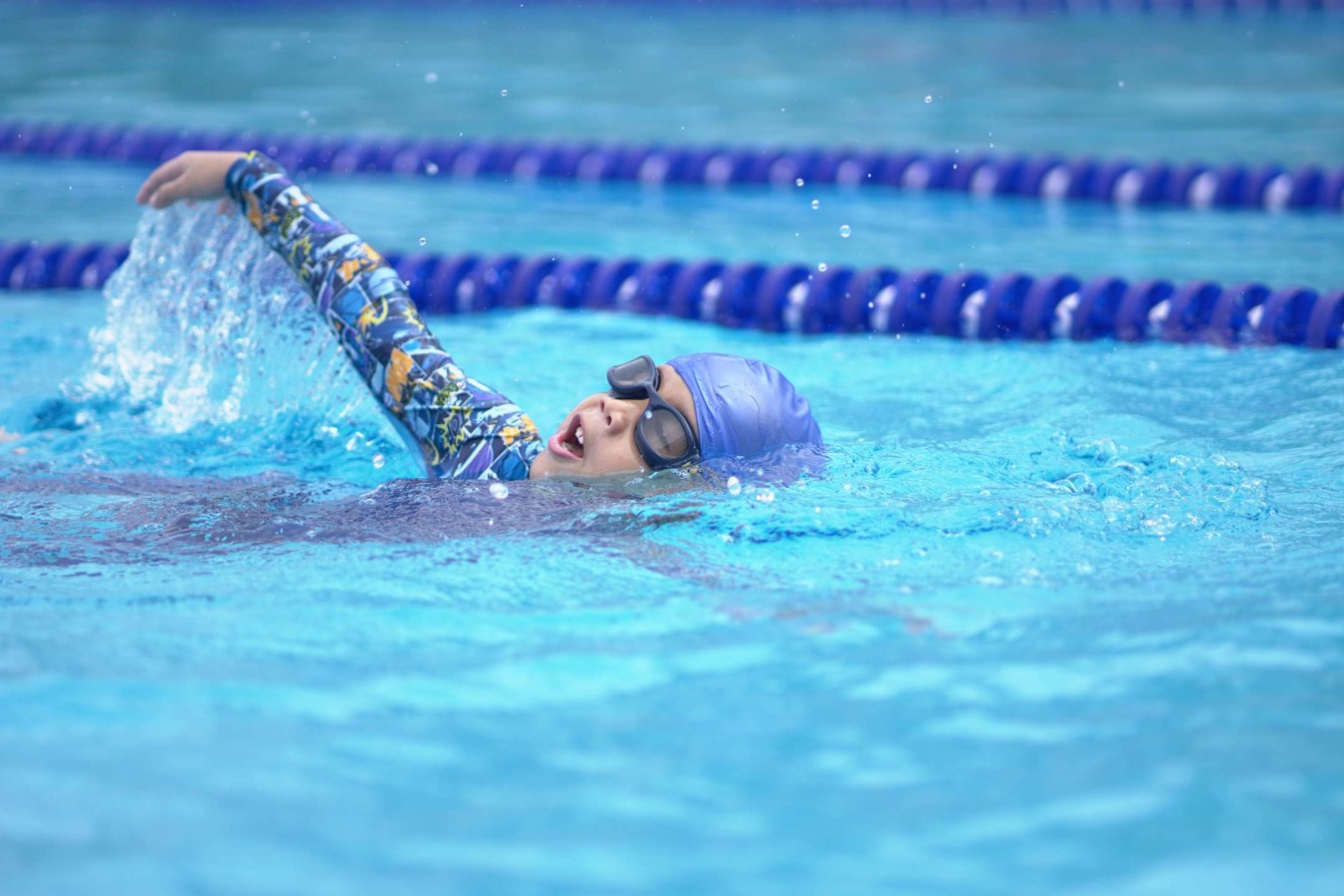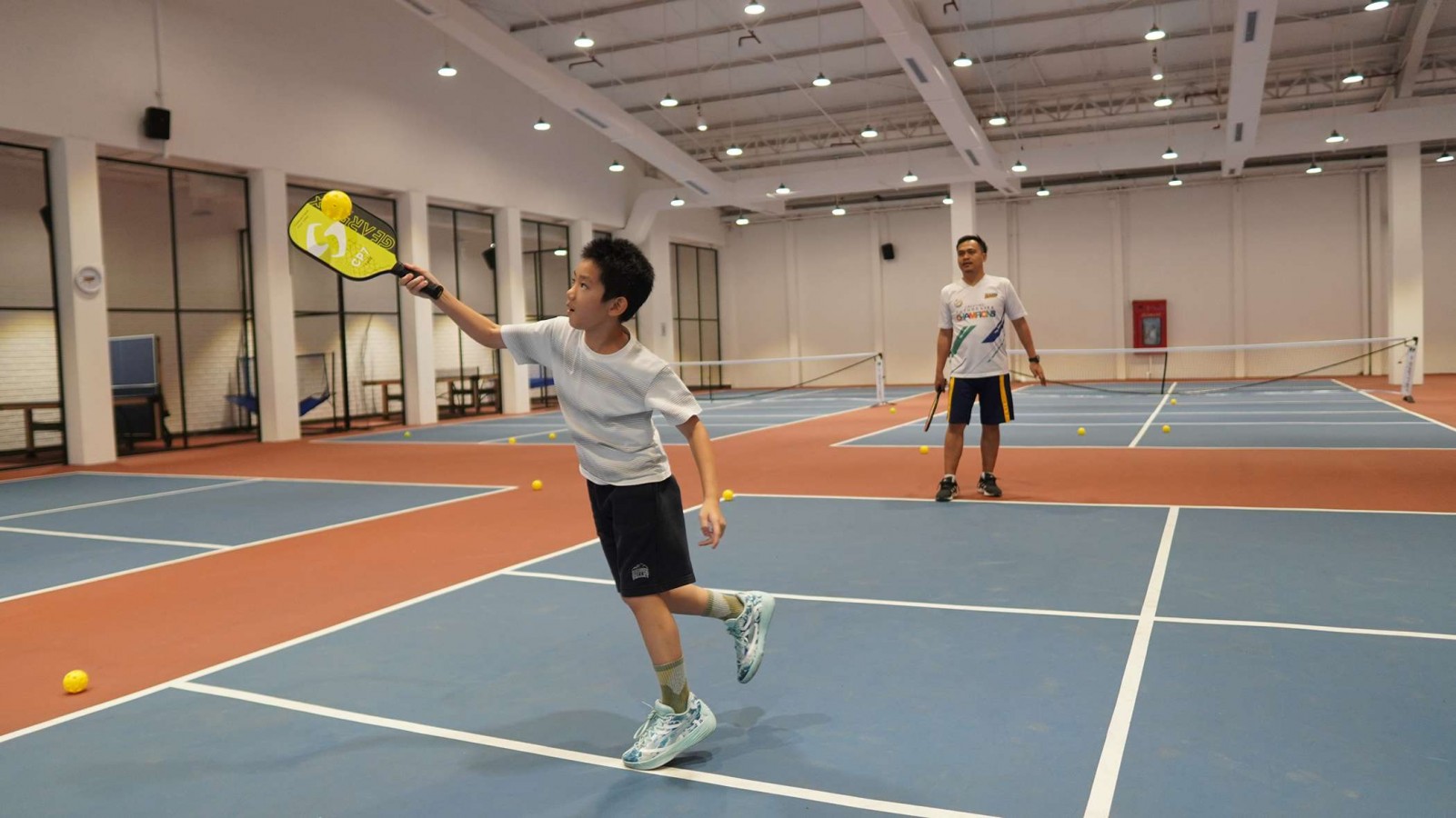Step-by-Step Guide to Learning Sidestroke Swimming

Sidestroke swimming is one of the most underrated yet super cool swimming styles. Whether you’re a beginner looking to expand your swimming skills or just curious about this classic stroke used by lifeguards and in water rescues, this guide will walk you through everything you need to know about sidestroke swimming. It's easy, fun, and surprisingly relaxing!
What is Sidestroke Swimming?
Sidestroke is a swimming style where your body stays on one side as you glide through the water using a scissor-like leg kick and a pulling arm motion. It’s different from freestyle or backstroke because you're not rotating your body with every stroke. Instead, one side faces the water while the other faces the sky or the pool edge.
Key Features of Sidestroke:
- Body Position: You lie on your side, one ear in the water.
- Arm Movement: One arm pulls, the other stays at your side or helps with balance.
- Leg Movement: The legs perform a scissor kick.
- Breathing: Since one side of your face is always out of the water, you can breathe naturally.
It’s often used in lifesaving situations because it’s efficient and lets one arm stay free which is perfect for holding onto someone while swimming to safety!
Step-by-Step Guide to Learning Sidestroke
Ready to try it yourself? Great! If you’re learning for fun, for fitness, or even to prepare for lifeguard training, the sidestroke is a graceful and efficient way to swim. Let's dive into the technique step by step:
Step 1: Start with the Right Body Position
First things first, let’s get your body into the perfect sidestroke shape. Lie on your side in the water, just like you’re lounging on a pool float. Your bottom arm, the one closest to the pool floor, should be extended straight out in front of you with your palm facing down. This arm acts like your rudder, helping you steer and glide.
Your top arm can rest gently on your side or extend a little forward to help with balance. Now for your head, keep it in line with your spine, and make sure your mouth stays comfortably above water.
Step 2: Practice the Arm Stroke
Now that you’re floating like a champ, let’s add in the arm action. Sidestroke only uses one main pulling arm which is the bottom arm. This arm is your powerhouse, while the top arm mostly stays by your side or makes small, gentle movements for balance.
Start by bending your bottom arm slightly at the elbow and pulling it back toward your chest in a scooping motion, like you’re hugging a big beach ball of water. Once the scoop is done, extend your arm forward again into the glide position. Then repeat the motion.
Practice this arm stroke slowly while standing in shallow water or holding onto the pool edge.
Step 3: Master the Scissor Kick
The scissor kick is the signature move of sidestroke and gives you most of your power and forward momentum. Picture your legs acting like a big pair of scissors.
Start by bending your knees slightly and separating your legs: your top leg moves forward, like you’re stepping out in front of you, while your bottom leg moves backward, like a backward kick.
Then, in one strong motion, snap your legs back together. After the snap, let your legs glide for a moment before kicking again.
The key is to make your movements smooth and even, keeping both legs on the same horizontal plane. If one leg splashes above the surface or drops too low, you’ll lose balance or sink.
Try practicing the scissor kick while floating on your side and holding the edge of the pool, so you can focus entirely on getting the motion just right.
Step 4: Coordinate Arms and Legs
Alright, you’ve got the arm stroke and scissor kick down. Now it’s time to put them together in a smooth, flowing motion. The sidestroke has a lovely rhythm: pull, kick, glide.
Begin by pulling with your bottom arm and performing the scissor kick at the same time. When both the arm pull and the kick are complete, stretch into a glide position. Let your body ride that momentum for a second before repeating the cycle.
Step 5: Practice Breathing
Here’s the best part about sidestroke: you can breathe naturally the whole time. Since your head stays above water as you swim on your side, there’s no need to master tricky breathing patterns like in freestyle or butterfly.
Just breathe in and out calmly, whenever you need. Some swimmers even chat with their swim buddy while sidestroking. This makes sidestroke a fantastic choice for long swims, beginners, or swimmers who feel anxious about putting their face in the water.
You don’t have to worry about timing your breath with your stroke. Instead, focus on keeping your head still, your neck relaxed, and your breathing nice and steady. If you’re ever tired during a swim, switching to sidestroke is like putting your stroke into cruise control.
Step 6: Use a Kickboard to Build Confidence
If you’re still getting used to floating on your side or coordinating your movements, swimming with a kickboard can be a game-changer. Kickboards are a great support tool when you’re learning sidestroke because they help you stay afloat and give you the freedom to focus on one part of your technique at a time.
You can also place the kickboard under your hip or along your side to help you stay horizontal in the water while practicing your arm movements. The extra floatation helps build confidence and lets you isolate each motion until it feels natural. If you don’t have a kickboard handy, a pool noodle or a pull buoy can do the trick too!
Step 7: Ask for Feedback and Keep Improving
One of the best ways to learn faster and become more confident in the water is by asking for feedback. Even professional swimmers have coaches constantly giving them tips on how to tweak their stroke, adjust their rhythm, or correct their posture.
When learning sidestroke, feedback helps you notice things you might not feel while swimming. Start by asking a swim instructor in any swimming program to watch and give you gentle pointers.
Are your arm movements clean? Are your legs snapping together properly during the scissor kick? Are you gliding too short or too long? You can even take it a step further by asking someone to record a short video of you swimming.
Want to Level Up? Try These Sidestroke Variations!
Once you've got the classic sidestroke down and feel totally in control gliding across the pool, it’s time to take things up a notch. Believe it or not, sidestroke has evolved into some super cool and powerful variations. Let’s check out two awesome ones you can explore next:
A. The Combat Side Stroke (CSS)
Ever wondered how Navy SEALs move stealthily through the water during their intense missions? Meet the Combat Side Stroke, or CSS for short. This is a special ops-level skill designed by the U.S. Navy SEALs to combine speed, stealth, and efficiency. Pretty awesome, right?
CSS is a mashup of sidestroke, breaststroke, and freestyle. It keeps the body low in the water to reduce visibility (ideal for sneaky swimming!) while still being super energy-efficient for long distances.
It involves a pull, breath, kick, and glide rhythm, but smoother and more streamlined. If you're up for a challenge and want to swim like a Navy pro, this is a great variation to try out.
B. The Trudgen
Now for a stroke with a splash of history which is the Trudgen. Named after English swimmer John Trudgen (way back in the 1800s), this stroke is like a throwback that helped shape modern freestyle. It evolved from sidestroke but added a twist: overarm strokes combined with scissor kicks.
The result? A faster, more powerful way to move through the water while still keeping that smooth sidestroke rhythm. The Trudgen gives you a great full-body workout, working your arms, legs, and core all at once. It’s a little more dynamic than sidestroke but still keeps that old-school elegance.
Ready to Try Sidestroke Swimming?
Learning sidestroke swimming can be a fun, relaxing, and even empowering experience. If you want your children to develop strong sidestroke skills (and much more!), we highly encourage you to enroll them in a swimming program at Rockstar Academy.
As the best Sports & Performing Arts Academy, Rockstar Academy offers a wide range of physical activity programs designed to help children unlock their full potential through movement, discipline, and fun.
What makes us stand out? At Rockstar Academy, students not only learn how to swim but also get the opportunity to compete and shine at the RockOlympics—a thrilling event where they can show off their progress and celebrate their hard work.
For those who want to go the extra mile, our Private Instruction Program provides personalized, skills-based training with dedicated one-on-one attention. Students receive weekly progress reports, training videos, tailored home exercises, and real-time feedback from expert instructors.
It’s the perfect way to give your child that extra boost, whether they’re just starting out or aiming for advanced levels. And guess what? We offer a FREE trial class so your child can dive in and experience the Rockstar difference before committing!
FAQ
Is sidestroke good for beginners?
Absolutely! It’s gentle, easy to learn, and great for anyone looking for a calm, low-impact way to move through the water.
Can sidestroke be used in competitions?
Not really. Sidestroke isn’t used in competitive swimming events. It’s more of a survival and recreational stroke. But it’s still a valuable skill to learn!
How long does it take to learn sidestroke?
With regular practice, most people can learn the basic technique in a few sessions. Perfecting coordination might take a couple of weeks.



